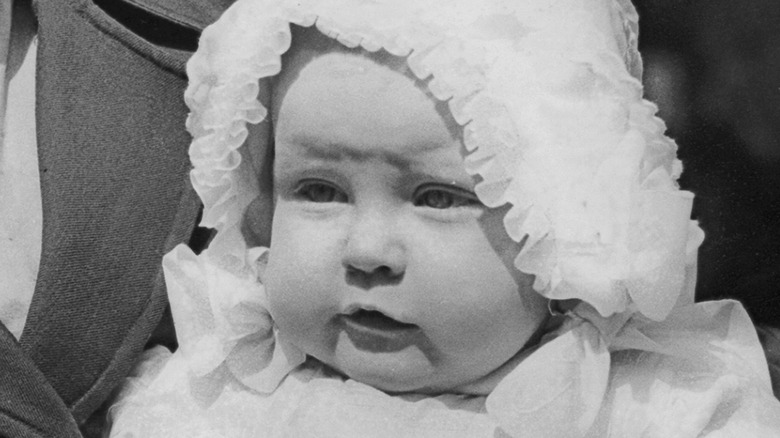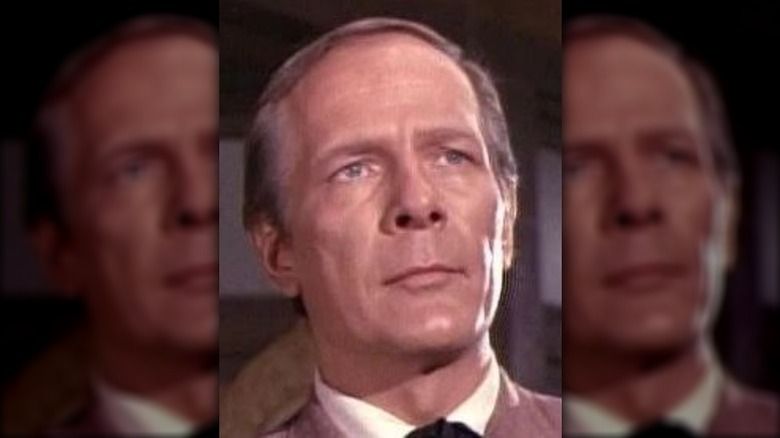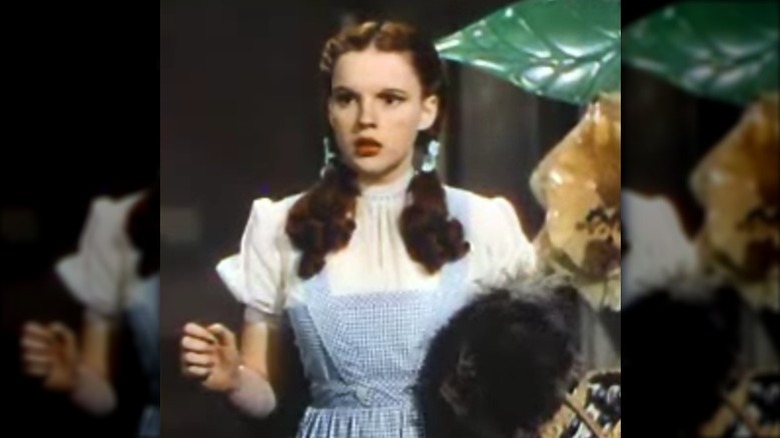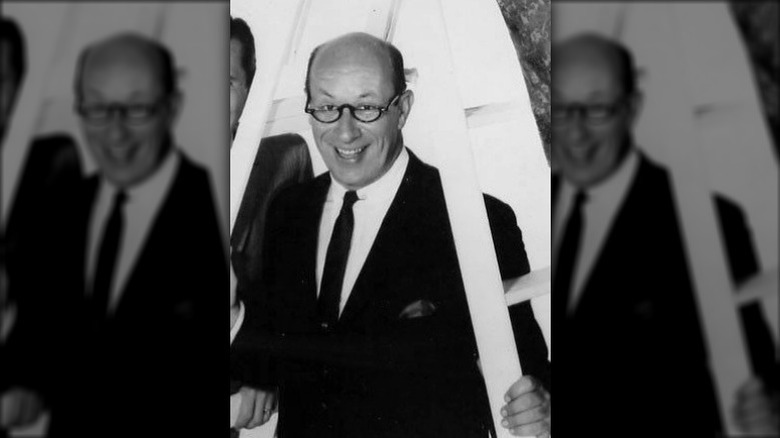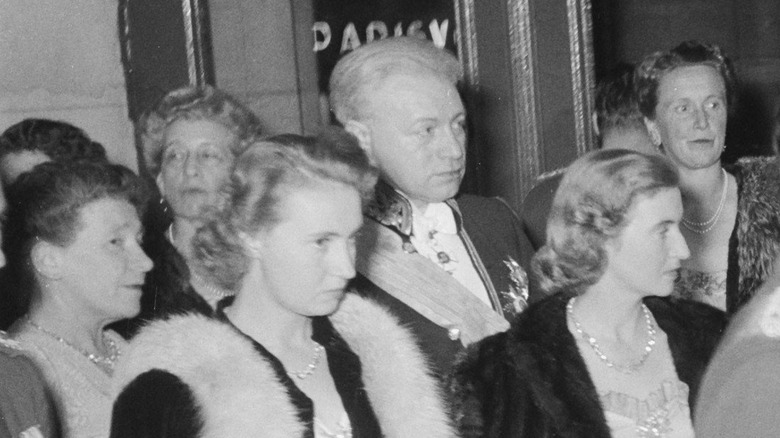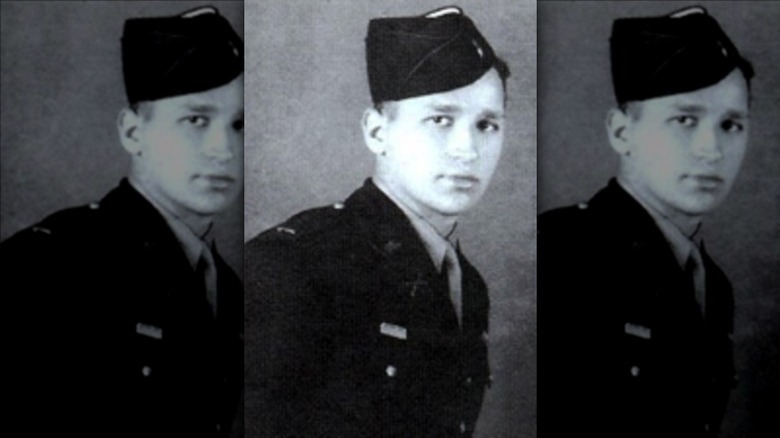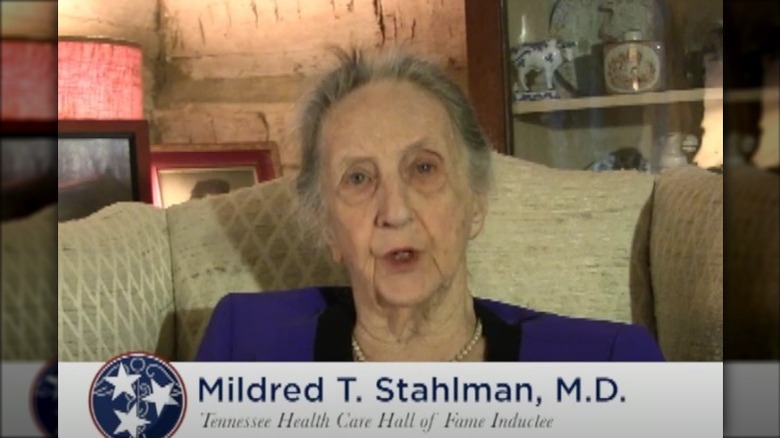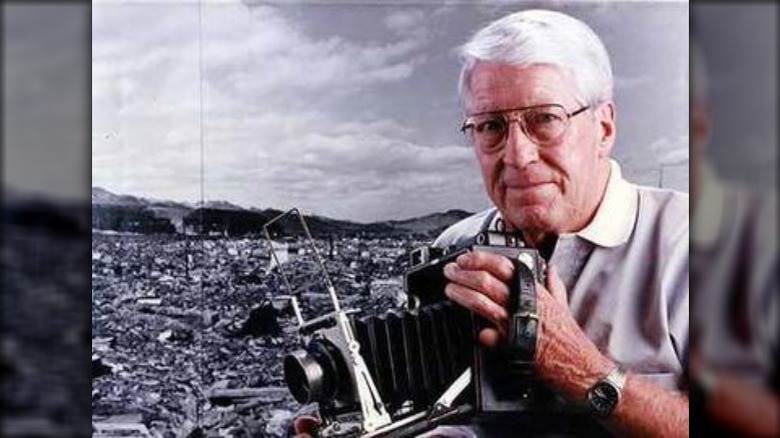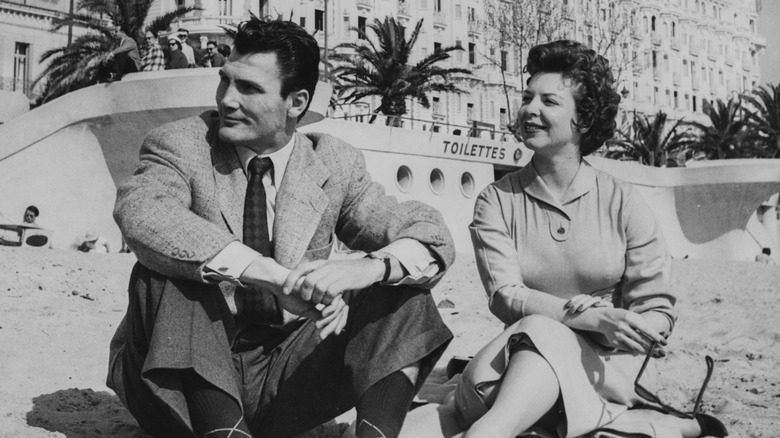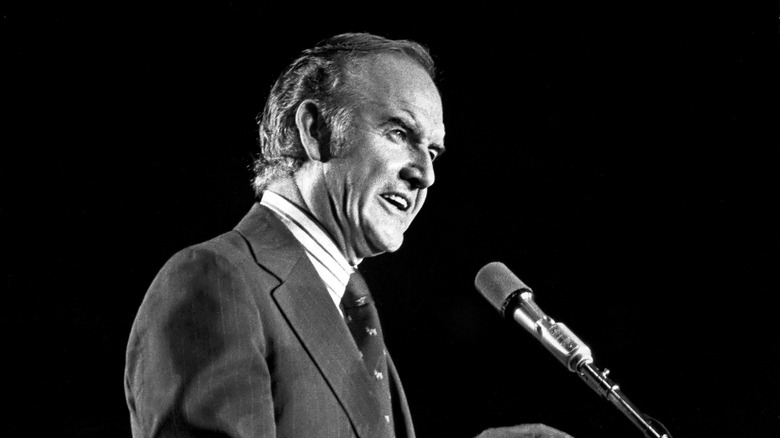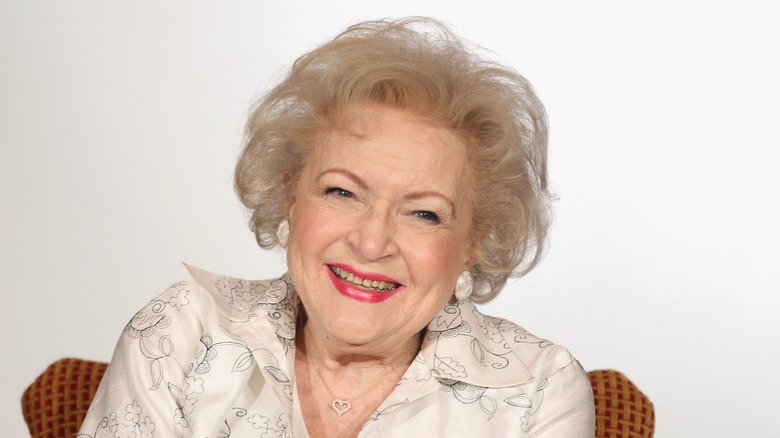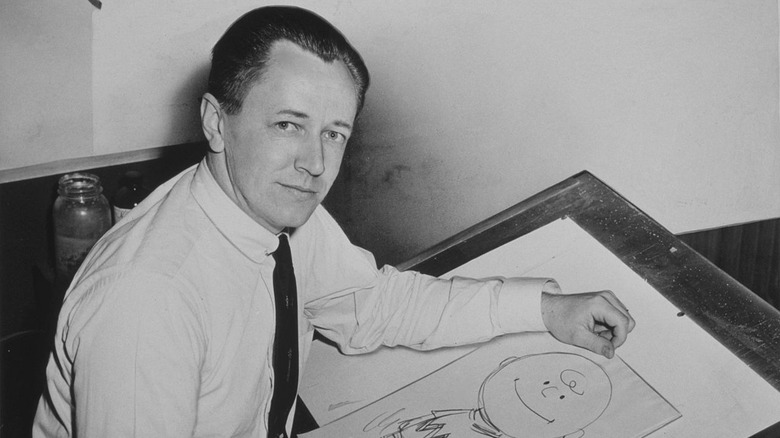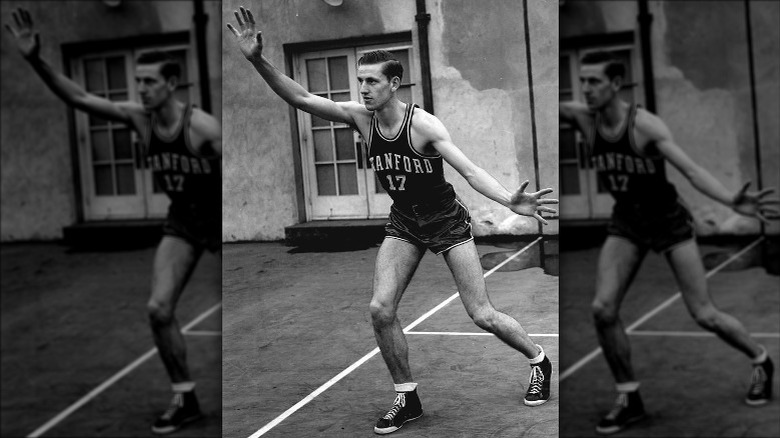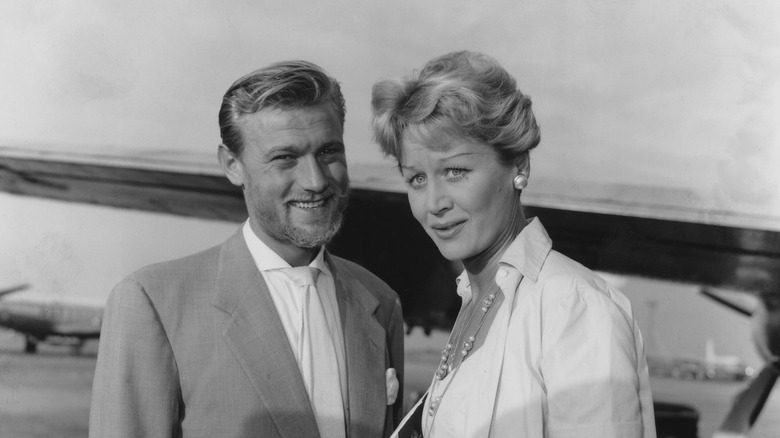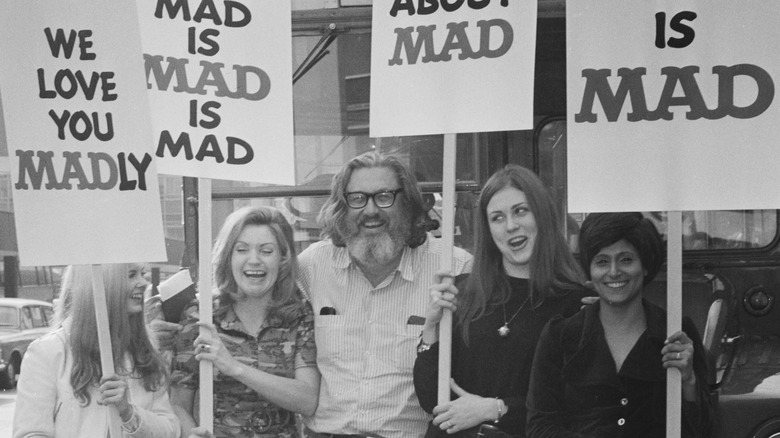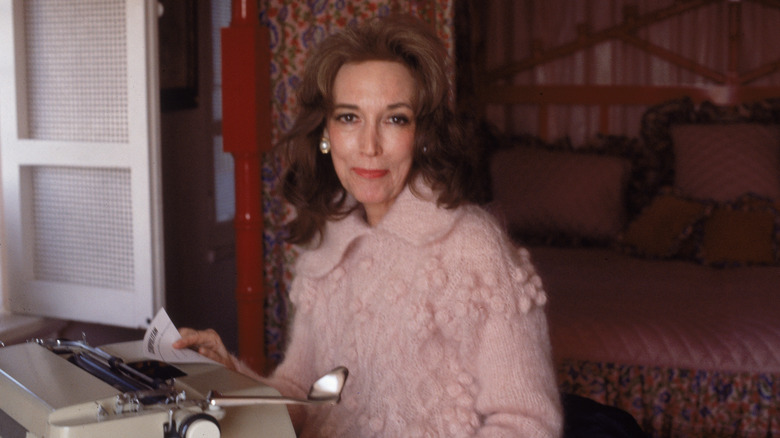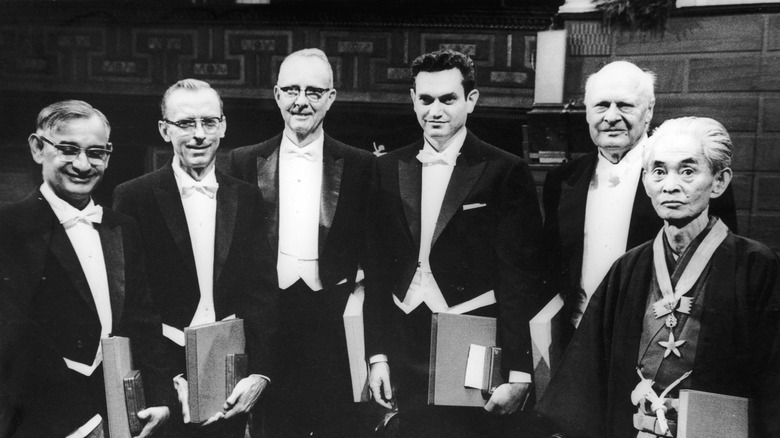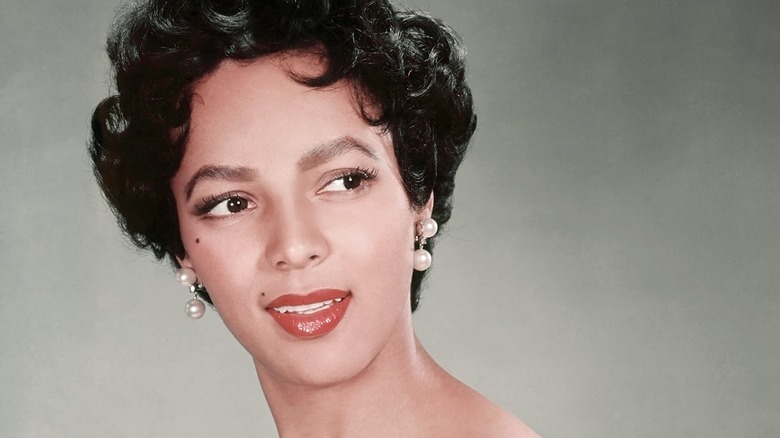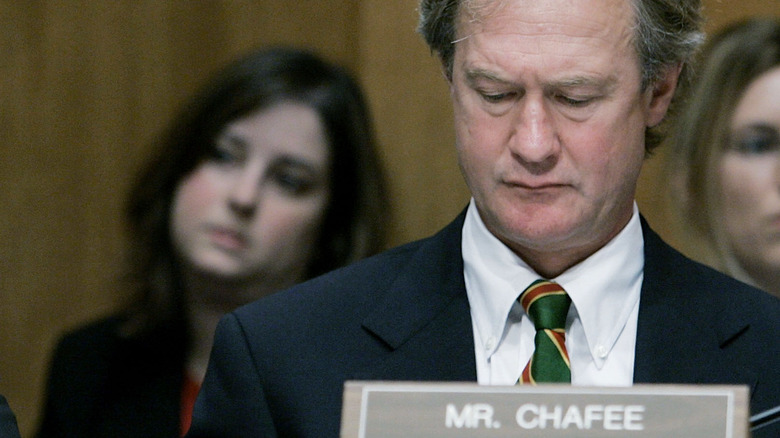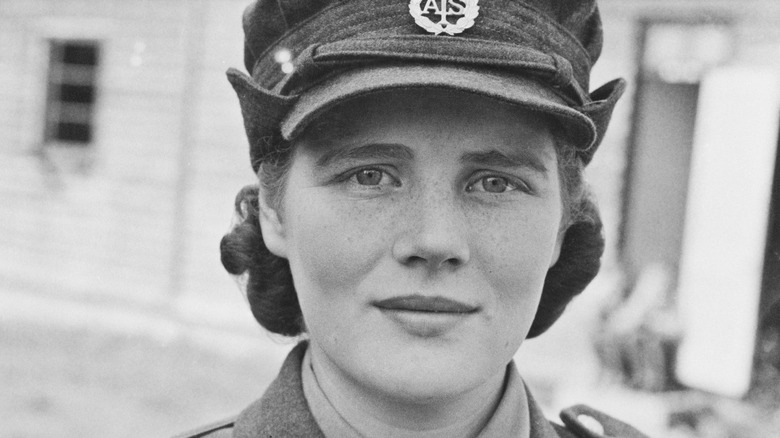The Most Popular Baby Names From 100 Years Ago
Becoming a parent is stressful for a million reasons, but one of the more unexpected ones is the pressure of choosing a baby name. It's a huge responsibility, as that name will come to define the child like almost nothing else. And the decision isn't made any easier by the fact that everyone in the world will have an opinion on what the best name is and what names bestowed on your baby would be tantamount to child abuse.
But just like everything else, names go in and out of fashion. One generation's favorite will sound like nails on a chalkboard to another. The biggest baby names of today are nowhere to be found in the U.S. top 10 list of boy and girl names from a century ago in 1922, for example – with one singular exception.
So what did the flappers, bootleggers, and Bright Young Things of 1922 name their kids? Read on to find out.
Number 10: Frank
The 10th most popular name for boys born in 1922 was Frank, which Behind the Name says dates back to the name for the Germanic tribe, the Franks.
While there weren't many Franks born in 1922 who went on to fame other than actor Frank Marth (pictured), there are some reasons the name might have been popular around that time. "The Wonderful Wizard of Oz" by author L. Frank Baum was published in 1900, per Britannica, and quickly turned into a play and a film, meaning the author's name would have been a big part of the childhoods of people becoming parents in 1922. For those who looked for a different type of art to be inspired by, the architect Frank Lloyd Wright was at the peak of his career.
And while Frank Sinatra might be the most famous Frank of all time, his name was a product of the era's Frank-craze and not the cause of it, since he was born in 1915.
Number 10: Frances
For all those parents who wanted a boy and were excited about naming him Frank but ended up having a girl and couldn't come up with an original name, Frances was the easy choice, also coming in at the 10th most popular. According to Behind the Name, it's simply the feminine form of the traditional boy's name Francis.
The infant Franceses of 1922 who went on to become household names included WWII pin-up girl Frances Rafferty, and Frances "Fran" Hopper, who CBR.com says drew comics for companies including Marvel during the "Golden Age" of the 1940s.
But by far the most famous Frances born that year was one who quickly dropped the name she'd been given: Frances Gumm, better known as Judy Garland. The Judy Garland Museum records that the name change happened in 1934, when she and her sisters had already been performing for years, in order to sound "more theatrical." She picked Judy from the title of a song that was popular at the time.
Number 9: Richard
A popular name in the English-speaking world for almost 1,000 years, Behind the Name says Richard comes from the German for "brave ruler."
While it was No. 9 in 1922, Richard found the peak of its popularity, at least in the past century and a half or so, when it hit No. 5 for boys in 1930, a spot it held firm in every year until 1947, when it began a slow and steady decline. In 2020, it was just the 208th most popular boy's name.
Those born in 1922 included the character actor Richard Deacon (pictured), most famous for appearing on "The Dick Van Dyke Show." The actor Richard Kiley mostly stuck to the stage, winning two Tonys for Best Actor in a Musical for his trouble, according to the Independent. And Richard E. Cunha became a director who the Los Angeles Times says is most famous for his now-cult classic B-movies from the 1950s.
Number 9: Elizabeth
Meaning "my God is an oath," Behind the Name says Elizabeth dates back all the way to Hebrew and is the name of John the Baptist's mother in the New Testament; it has been a common name ever since.
While Elizabeth was No. 9 for girls in the U.S. in 1922, it was a popular name in other countries as well. It seems aristocrats were especially fond of it. Lady Elizabeth Montagu Douglas Scott was the daughter of Britain's 8th Duke of Buccleuch, according to the Independent, and she went on to become Elizabeth Percy, Duchess of Northumberland when she married that duke. Meanwhile, on the continent, Elisabeth of Luxembourg (pictured) (who counts, despite the "s" vs. "z" spelling of her name), was born to the reigning Duchess of that country, and would go on to marry a grandson of Archduke Franz Ferdinand. However, the most famous royal Elizabeth, the future queen of England, would not be born until 1926.
Number 8: Edward
While English takes plenty of names from other languages and makes them its own, the same was not usually true in the other direction. But Behind the Name explains that Edward comes from Old English meaning "wealth" or "fortune" and that versions of it became popular in other European countries.
In 1922, Edward came in at No. 8 for boys, which was pretty much the peak of its popularity, as it has never cracked the top 5 in the past 100 years. Edward was the name of the then-Prince of Wales, which might have helped its popularity, as British royal names are always influential, even in America.
Notable Edwards born in 1922 included the chemist Edward M. Arnett, the groundbreaking (pun intended) archaeologist Edward B. Jelks, and the WWII hero Edward D. Shames (pictured), who, according to IMDb, was included as a character in the miniseries "Band of Brothers," which the New York Times reports was based on the true story of Shames' paratrooper company during the war.
Number 8: Mildred
Mildred is one of those names that went so completely out of fashion that it's hard to picture someone with the name as anything other than an old lady. But that makes sense, since there was a time when Mildred was very popular, and the many people who were christened Mildred would have been pretty darn old by the time the current younger generations were born.
Behind the Name says Mildred comes from the Old English for "gentle strength." Despite the lovely meaning, the name fell totally out of fashion for about 800 years, until the Victorians decided they liked it and brought it back. In 1922, Mildred came in at the No. 8 most popular name for girls.
One notable Mildred born that year was Dr. Mildred T. Stahlman, who went on to revolutionize the field of pediatrics when she created "the world's first modern neonatal intensive care unit" for newborns, according to the National Library of Medicine.
Number 7: Joseph
Joseph comes from Hebrew, according to Behind the Name, and means "he will add." As you'd expect for the moniker of two important guys in the Bible (of Technicolor Dream Coat and adopted father of Jesus fame), Joseph has long been popular, and not out of the top 25 in the U.S. since 1880. In 1922, it came in at No. 7.
That year saw the birth of hall of famer college basketball coach Joseph "Joe" Vancisin (his parents went full-on fashionable for their son's moniker, since his middle name was Richard, the No. 9 most popular boy's name that year). The famous photojournalist Joseph "Joe" O'Donnell (pictured) was also born that year, and it was only when he died in 2007 and his many obituaries in newspapers, including the New York Times, credited him with iconic photos — including the one of a 3-year-old JFK Jr. saluting his father's coffin — that the world discovered for years he had taken credit for the work of other photographers.
Number 7: Virginia
Virginia has a surprisingly complicated history, according to Behind the Name. Originally, it comes from the name of a Roman family and not from "virgin," although that's what most people would probably associate it with today. Queen Elizabeth I's decision to say unmarried resulted in a colony in the New World being named Virginia after her lack of sex life. When the first baby born in that colony was a girl, they named her Virginia as well.
Whether they liked the state, the history, or the meaning, lots of parents picked Virginia as their baby's name in 1922, and it came in No. 7 on the most popular list, although it never managed to crack the top 5 in the past century.
One of the many Virginias born in 1922, according to Find a Grave, was Virginia Baker, who was an actor in her own right but would end up being most famous for her marriage to Jack Palance from 1949 to 1968.
Number 6: George
Coming in at No. 6, George is another name whose popularity in America in 1922 might have been influenced by the British royal family, since George V had been on the throne for 11 years. (It's obviously a name the royals are fans of even a century later, since it's the one the Duke and Duchess of Cambridge, a.k.a. Prince William and Kate Middleton, gave their eldest child.) This is a bit ironic, considering Behind the Name says George comes from the Greek word for farmer.
Plenty of 1922's newborn Georges went on to fame and fortune. The Guardian called George Walker "the great American composer you've never heard of," and he was the first African American to win a Pulitzer for music. George Kell became one of the best third basemen ever and was inducted into the Baseball Hall of Fame. And politician George McGovern (pictured) was a senator who became most famous for losing the 1972 presidential race to Richard Nixon.
Number 6: Betty
While Behind the Name says Betty can be a nickname for a child whose full name is Elizabeth, in 1922, the diminutive was popular enough on its own to come in at No. 6, besting its longer version by three places.
But Betty was not yet at the peak of its popularity that year. According to the Social Security Administration, the name kept increasing in popularity until it hit No. 2 in 1928, a position it held until 1935, when it started creeping back down again. Seemingly having had its 15 minutes of fame, Betty hasn't cracked the top 5 names for girls since 1940.
The most famous Betty born in 1922 was, of course, Betty White, the iconic "Golden Girls" actor whose death on New Year's Eve in 2021, just weeks short of her 100th birthday (via People), was mourned by seemingly everyone, especially on Twitter.
Number 5: Charles
Royals always influence popular names, but in this case, it's not the current Prince Charles, according to Behind the Name, but the Medieval king of the Franks, Charles the Great. Of course, he's better known as Charlemagne, but that didn't catch on. The name got a big boost in England in the 1600s when two kings were called Charles (even if one lost his head).
Coming in at No. 5 most popular in 1922, Charles – which comes from the German for "man" – held that spot through 1929 but hasn't been in the top five since. However, the feminized version of the name, Charlotte, was No. 4 for girls in 2020.
The year 1922 saw plenty of babies named Charles who would go on to be well-known. There was the civil rights leader Charles "Charlie" Evers, 13-term congressman Charles Diggs, jazz great Charles Mingus, and creator of the iconic "Peanuts" comic strip Charles Schulz (pictured).
Number 5: Ruth
Another name helped along by its prominence in the Bible, Ruth comes from the Hebrew for "friend," according to Behind the Name. Its popularity in America got a huge boost in 1891 when President Grover Cleveland christened his daughter Ruth. The name came in at the No. 5 most popular for girls in 1922.
The year was a big one for Ruths in general. Babe Ruth had just had a season so epic – arguably the best offensive season a baseball player has ever had – that researchers have tried to figure out how he did it, according to the National Baseball Hall of Fame. The Baby Ruth candy bar had been introduced the year before as well, and was a huge hit, per Snopes.
Whether her parents liked baseball or chocolate is lost to history, but actor Ruth Godfrey – who would go on to star in almost a dozen shorts with the Three Stooges – was one of the many Ruths born in 1922.
Number 4: James
James has the distinction of being the only baby name – for boys or girls – that was in the top 10 in 1922 and was also in the top 10 in 2021: at No. 4 and No. 9, respectively. James' staying power is impressive, as it was in the top 5 every year from 1921 to 1980 (including holding the No. 1 spot from 1940 to 1952). However, it fell out of fashion a bit for the parents of Millennials, and while Behind the Name says it never dropped out of the top 20, it wouldn't enter the top 5 again until 2016.
James comes to English indirectly from the Hebrew name Jacob, through various Latin forms of the name.
Babies named James from 1922 who went on to greatness include acting Chairman of the Joint Chiefs of Staff Admiral James L. Holloway III, the first Black mayor of Atlantic City James Usry, and Basketball Hall of Famer James "Jim" Pollard.
Number 4: Margaret
According to Behind the Name, Margaret is from the Greek for "pearl," although it may originally come from an Indo-Iranian language.
In 1922, Margaret was the No. 4 most popular name for girls and would remain in the top 5 until 1930. But Behind the Name says it was even more popular in the U.K., where it was the No. 1 most popular name of the decade for girls in the 1920s, 1930s, and 1940s.
The name seems to have been particularly popular for English babies born in 1922 who would go on to be famous ballet dancers, as it was the career choice of both Margaret Gale (who would also become a producer and director of dance programs at the BBC, according to the New York Times) and Dame Margaret Scott (whose first name was actually Catherine, per Encyclopedia.com, but she went by her middle name). The British actor Margaret Leighton (pictured), winner of two Tony awards, was also born in 1922.
Number 3: William
A perennial favorite, William has appeared in the U.S.'s top 5 favorite boy's names 41 times in the past century and has never been out of the top 20 since records began in 1880. (Although, bizarrely, it has never made it to the top spot.) In 1922, it came in at a solid No. 3. According to Behind the Name, William comes from the German for "will helmet," or, more poetically, "desire" and "protection."
Plenty of Williams born in 1922 went on to fame and fortune. There was William "Bill" Davidson, who made enough money in business to buy himself a few sports teams, including the Detroit Pistons, and was inducted into the Basketball Hall of Fame, per ESPN. William Milliken holds the record as Michigan's longest-serving governor. William Gaines (pictured) was the publisher of MAD Magazine for four decades. And while William R. Lucas reached the height of his field as the fourth director of NASA's Marshall Space Flight Center, he would resign under a cloud after the Challenger Disaster.
Number 3: Helen
The Anglicized form of an ancient Greek name, it's not clear what Helen meant originally, with possibilities including "torch" and "moon," per Behind the Name. Parents in the '20s were big fans of the name, and it held the No. 3 or No. 4 spot every year from 1921 to 1930, although it has never cracked the top 5 since.
Famous Helens born in 1922 include the baseball player Helen "Gig" Smith, who participated in the All-American Girls Professional Baseball League – made famous in "A League of Their Own" – while men were away fighting in WWII. Helen Gurley Brown (pictured) wrote "Sex and the Single Girl" in 1962, which the New York Times says shocked a country only just entering the swinging '60s with the information that unmarried women also had sex lives. She went on to become the editor-in-chief of Cosmopolitan, a position she held for the next 32 years.
Number 2: Robert
While it has fallen in popularity now, Robert was a dominant name in the 20th century, making the top 5 most popular every year from 1921 to 1971. In 1922, it came in at the No. 2 spot.
Behind the Name says Robert comes from the German for "bright fame," and many of the Roberts born in 1922 did their name proud. The scientist Robert Holley (pictured second from left) won the Nobel Prize in Physiology or Medicine in 1968 for his work on tRNA. Robert L. Backman was a member of the Church of Jesus Christ of Latter-Day Saints, working his way up through the ranks until he was one of the most important men in the religion's hierarchy: a member of the First Quorum of the Seventy, per Deseret News. And in his obituary, the New York Times eulogized writer/producer Robert Aurthur as "one of the leading dramatists of the golden age of television."
Number 2: Dorothy
Dorothy, a version of Dorothea, had been around for about 400 years, per Behind the Name, by the time 1922 babies were being christened.
Thanks to the publication of various Wizard of Oz books in the previous two decades, expectant parents in 1922 would have been very familiar with the name Dorothy. And enough of them liked it, whether because of or in spite of the popularity of the character Dorothy Gale, that they made it the No. 2 biggest name for girls that year.
Actor Dorothy Morris appeared in films throughout the 1940s, but the most famous Dorothy of 1922, by far, was the actor and singer Dorothy Dandridge. Biography records that in 1954, she became the first Black woman to be nominated for the Best Actress Academy Award, for her role in the musical "Carmen Jones." (Four years later, Sidney Poitier would be the first Black man nominated for Best Actor.)
Number 1: John
According to Behind the Name, John comes from the Hebrew for "to be gracious." BabyCenter records that while John had been the most popular name for boys for the three previous decades — its success likely helped along by its association with two important men in the New Testament — by 1922, it had reached its peak. While John took the No. 1 spot again the next year, after that it dropped steadily in the rankings.
Inevitably, considering how many there were to choose from, plenty of Johns born in 1922 went on to become famous in one area or another. These included politicians such as John B. Anderson (U.S. Congressman and 1980 presidential candidate) and John Chafee (Secretary of Defense and 4-term U.S. Senator); scientists including the 2019 Nobel laureate in chemistry John B. Goodenough (who was 97 when he won); the prolific character actor John Anderson; and the champion racecar driver John "Johnny" Thomson.
Number 1: Mary
When it comes to historically popular names for girls in the Western world, there is Mary, and then there is everything else. The staying power of the name is astonishing, even if the obvious reason, that it was the name of Jesus' mother, means it's been religiously significant for Christians for 2,000 years. And that's before you include all the many other women named Mary mentioned in both the Old and New Testament, Behind the Name explains.
Even before official records began, you only have to open a history book to see all the women who were christened Mary. Once we did start recording these things, BabyCenter says Mary was the U.S.'s most popular girl's name every single year from 1890 to 1947, when it was dethroned by Linda, before retaking the top spot from 1953 to 1961. However, it's fallen steadily in popularity since then.
Famous Marys born in 1922 included the sculptor Mary Fuller and Winston Churchill's daughter Lady Mary Soames (pictured).
